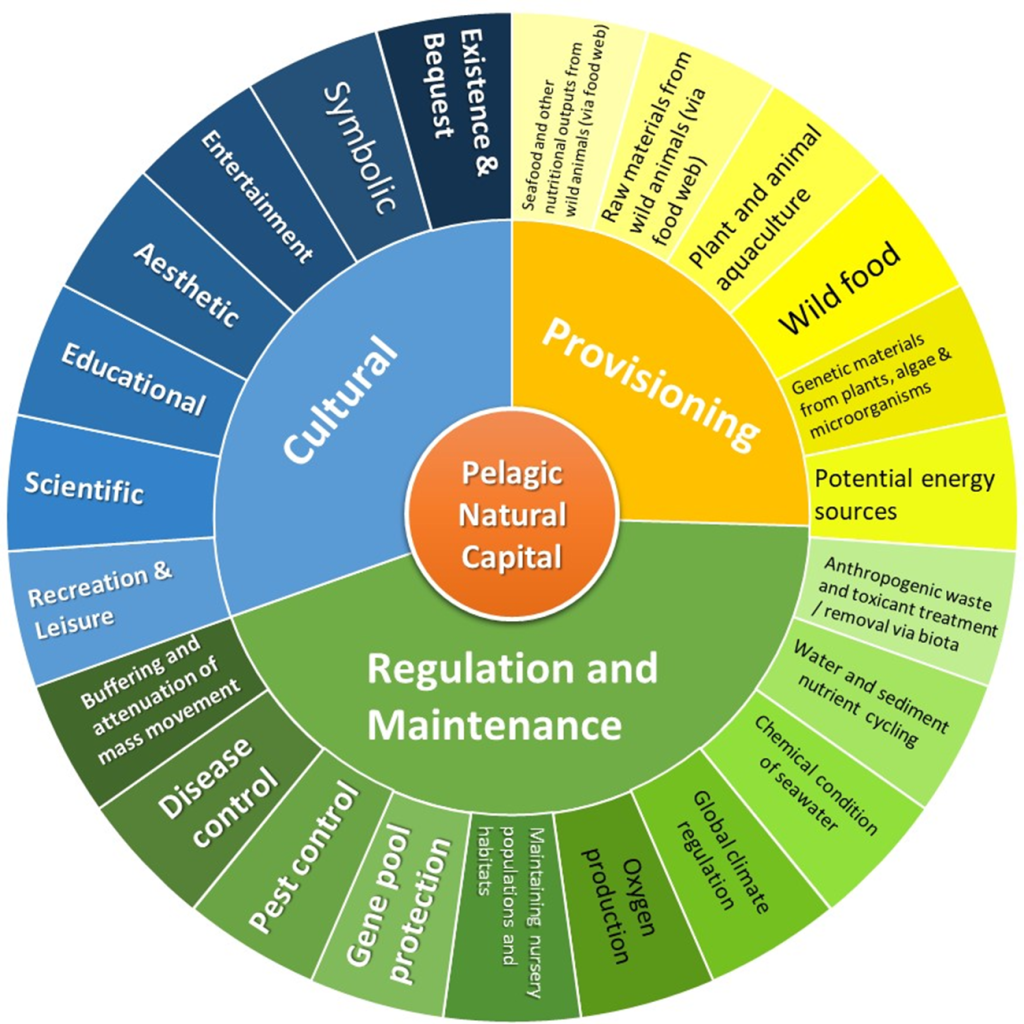The term “plankton” encompasses a wide range of organisms from the smallest virus and bacteria, through small and large phytoplankton (photosynthetic drifting algae), to small and large zooplankton (copepods, shrimps, jellyfish, and the larvae of bivalves, crabs, and fish), with an equally broad range of ecosystem services.

The diversity of species of plankton is simplified by grouping species into “lifeforms”. They are all thought to have major functional roles in the Pelagic Habitat, though not all roles are well understood in ecological terms. In terms of ecosystem services it is only a sub-set of lifeforms (e.g. diatoms, dinoflagellates, coccolithophores, copepods, euphausiids and jellies) about which we know enough to specify their contribution to human well-being.
Around these we are designing a number of tools to help natural capital decision making including: